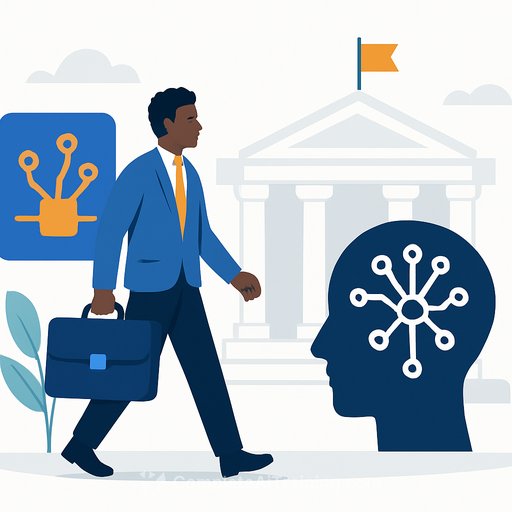Albania just appointed an AI as Minister for Public Procurement. Here's what government leaders should actually do next
Albania has appointed an AI-powered digital assistant, Diella ("sunshine" in Albanian), to a ministerial post overseeing public procurement. Diella began as a chatbot avatar in traditional dress on government sites and now sits under the direct responsibility of Prime Minister Edi Rama.
The media are split. Some argue an AI minister avoids perks, nepotism, and bad habits that plague officeholders. Others warn that handing formal decision power to software creates accountability gaps and legal risks that could undermine transparency rather than improve it.
Why this matters for government
- Procurement is a corruption hotspot. An AI can flag red flags at scale and enforce policy consistently.
- Ministers must be accountable. If an AI signs or directs administrative acts, who answers to parliament and courts?
- Legitimacy is earned. Without a clear legal basis, auditability, and human oversight, public trust will drop.
- Data quality is destiny. If the inputs are biased or manipulated, the outputs will be too.
What the public debate highlights
- Practical upside: no housing subsidies, chauffeurs, or family favors. Fewer human temptations.
- Constitutional questions: most legal frameworks assume ministers can appear, explain, and be held to account.
- Institutional limits: AI as technical support is not the same as delegating final decisions without effective human mediation.
- Structural reality: technology won't fix entrenched networks by itself. It can detect patterns; it can't clean house unless humans act.
Policy guardrails before deploying an "AI minister" or any autonomous public system
- Legal mandate: Define the AI's role in law or regulation. Specify decision rights, appeal pathways, and liability.
- Human-in-the-loop: Require human sign-off for awards, exclusions, sanctions, and any action affecting rights or funds.
- Chain of accountability: Name the accountable minister and senior official for every AI decision class.
- Scope boundaries: List what the AI may recommend vs. what it may never decide (e.g., vendor blacklisting).
- Model governance: Document model provenance, training data sources, evaluation, and update policy ("model card").
- Data governance: Approved datasets only, data lineage tracking, and periodic quality/bias checks.
- Transparency: Provide reasons for decisions that a qualified person can understand and explain.
- Auditability: Immutable logs of inputs, model versions, prompts, outputs, and human overrides.
- Appeals and redress: Clear routes for vendors and citizens to contest outcomes; time-bound responses.
- Security: Threat modeling, red-teaming, access controls, and change management for model updates.
- Bias and fairness reviews: Independent testing across sectors, regions, and vendor sizes.
- Ethics and oversight: External advisory board and procurement ombud with subpoena power.
- Kill switch and rollback: Immediate disablement capability with fallbacks to human procedures.
- Competency: Train the civil service and procurement officers to use and challenge AI outputs.
Operational blueprint for a digital procurement assistant
- Ingest and normalize tender data, vendor histories, beneficial ownership, and conflict-of-interest disclosures.
- Risk scoring of tenders based on indicators: single-bid patterns, unusual specs, pricing anomalies, repeat winners, timing spikes.
- Explainable alerts that cite the exact features and thresholds that triggered flags.
- Review tiers: low-risk auto-advance with sampling; medium-risk routed to analysts; high-risk to a cross-agency panel.
- Conflicts and collusion checks using ownership graphs and prior relationships.
- Randomized audits to reduce gaming and measure false positives/negatives.
- Public transparency dashboard with aggregate stats and methodology summaries.
Metrics that matter
- Percentage of tenders flagged and resolved; median time-to-award.
- False positive and false negative rates verified by audits.
- Detected conflicts of interest and sanctions upheld on appeal.
- Savings vs. benchmarks; vendor participation diversity over time.
- Complaint rates and outcomes; court challenges sustained or overturned.
Albania: signals to watch
- The formal legal basis defining Diella's powers and the named human accountable.
- Publication of criteria, data sources, model documentation, and update cadence.
- Independent oversight with access to logs and the authority to intervene.
- Whether administrative courts accept Diella-linked acts as valid and reviewable.
- Clear liability rules if a decision is unlawful or harmful.
If you plan a similar move, start here
- Run a pilot as decision support, not decision maker. Prove value, then consider limited delegation with safeguards.
- Codify oversight, audit, and appeal in binding policy before go-live.
- Publish your model card and procurement risk taxonomy; invite civil society and vendors to comment.
- Stage deployment: one ministry, one category, strict KPIs, independent evaluation, then scale.
Further reading
- EU Artificial Intelligence Act (2024) - obligations for public sector use
- OECD AI Principles - governance guidance
Build internal capability
If your team needs a fast, practical way to upskill on AI governance, procurement use cases, and oversight, review curated training paths by job role.
Bottom line: AI can make procurement cleaner and faster, but legitimacy comes from law, oversight, and human accountability. Treat the model as a civil servant's tool, not a shield for decision-makers.
Your membership also unlocks:






